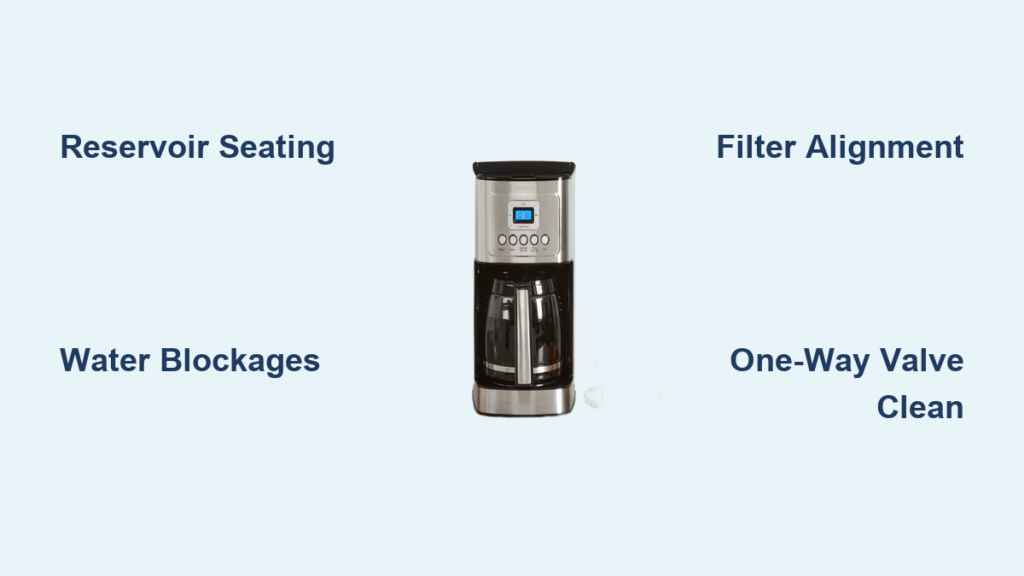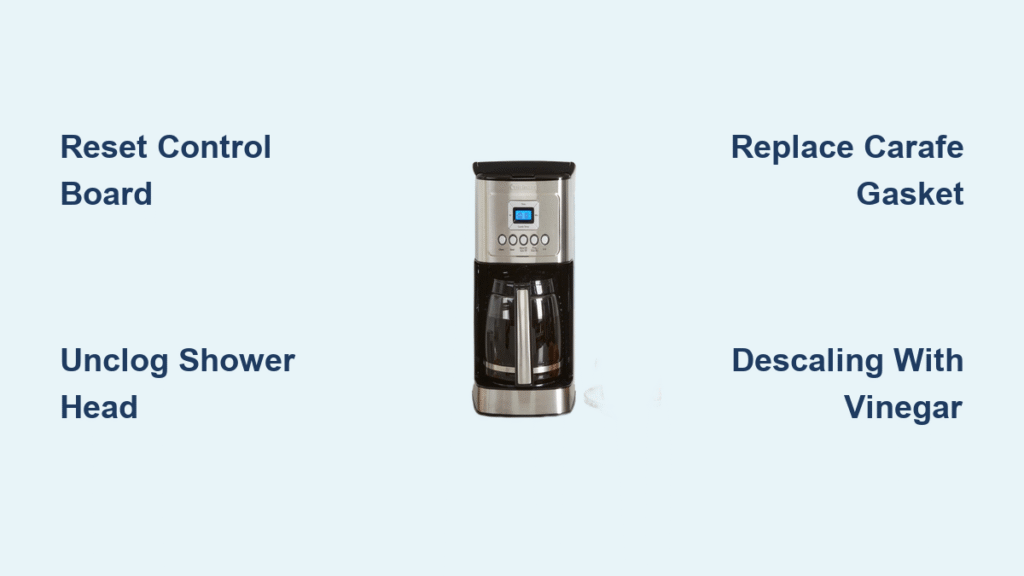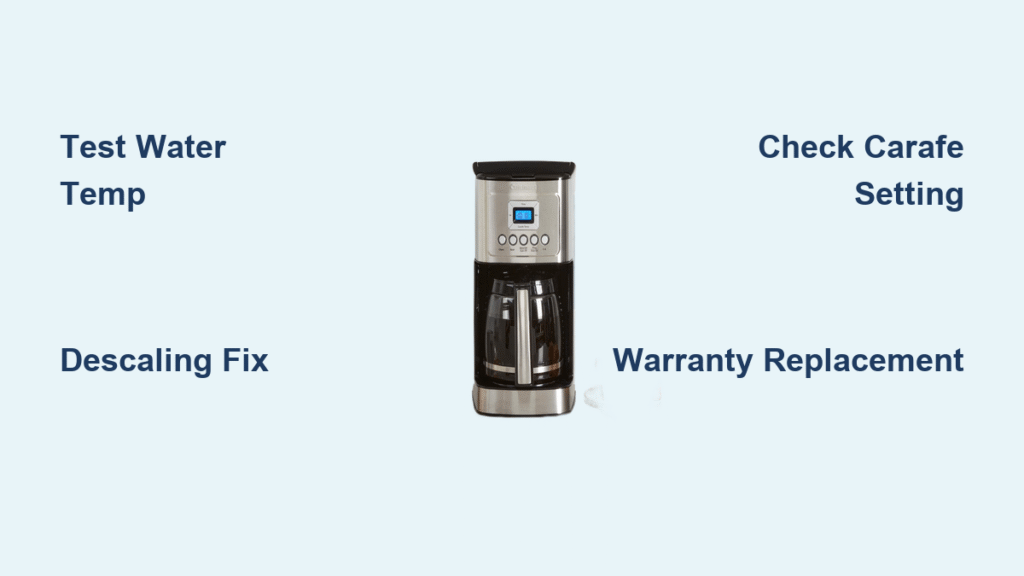Your Cuisinart crock pot sits dark and silent while dinner plans unravel. You press the power button, but the display stays black—no countdown, no heat, just cold ceramic waiting for a meal that won’t happen. If this Cuisinart crock pot troubleshooting nightmare sounds familiar, take heart: 80% of power failures stem from five fixable issues you can resolve in under 60 minutes with basic tools. Whether you own the compact PSC-350C or the multi-functional MSC-800, this guide delivers proven diagnostics straight from technician service manuals. You’ll learn to revive your slow cooker without replacing it, saving hundreds compared to buying new.
Stop guessing what’s wrong. We’ll walk through exact tests for power failures, heating malfunctions, and control glitches—no electrical expertise required. Most repairs cost under $30 and restore full function before your next meal. Let’s get your Cuisinart crock pot cooking again.
Why Your Cuisinart Crock Pot Display Stays Dark
Test the Outlet and Power Cord First
Before dismantling your unit, rule out simple external failures. Plug a lamp or phone charger into the same outlet—if it doesn’t power on, you’ve found the culprit. Next, inspect your Cuisinart crock pot’s cord for cuts, kinks, or melted spots, especially near plug ends. For MSC-800 or MSC-600 models with retractable cords, perform this critical test: gently pull the cord in and out while watching for flickering display lights. Any intermittent power during movement confirms internal wire breakage.
Pro tip: Wiggle the cord where it enters the base while plugged in. If the display flashes or powers on briefly, replace the cord immediately—exposed wires risk electrical shock. Retractable cord reels (like MSC-800CORD) require full assembly replacement since individual wires aren’t serviceable.
Reset the Pot and Lid Safety Sensors
Cuisinart units refuse to power on if safety interlocks detect improper assembly. Start with the cook pot sensor: locate the spring-loaded plunger in the base cavity. Press it down—it should spring back smoothly. If stuck, clean debris with warm soapy water and apply one drop of food-grade silicone grease to the shaft. Sticky plungers trick the unit into thinking the pot is missing.
Next, address lid alignment issues. Remove the lid and inspect the rubber gasket for food debris. Clean thoroughly, then ensure the lid clicks securely into place. Misaligned lids prevent the magnet from triggering the base’s hall-effect sensor—a common cause of “phantom” power failures. Test magnet strength by holding a paperclip to the lid; weak attraction requires magnet replacement.
Diagnose the Blown Thermal Fuse

When outlets and cords check out but your unit stays dead, a blown thermal fuse is likely. Warning: This requires base removal. Unplug for 30 minutes to discharge capacitors, then remove the base screws (usually hidden under rubber feet). Locate the small glass or ceramic fuse near the power cord entry point. Using a multimeter set to continuity mode, touch probes to both ends—no beep means replacement is needed.
Match the new fuse exactly to the original’s amperage rating (typically 5-10A). Most Cuisinart models use a 172°C (342°F) thermal cut-off fuse costing $8-$12. Incorrect ratings risk fire hazards or repeated failures. If the new fuse blows immediately, investigate underlying causes like blocked vents or failed heating elements before proceeding.
Why Your Cuisinart Crock Pot Has Power But Won’t Heat
Check the Heating Element Resistance
Your display shows active timers, but after 30 minutes on HIGH, the pot remains cold. This points squarely to heating element failure. Test resistance in 10 minutes: Unplug the unit, remove the base, and locate the circular heating element bonded to the aluminum heat spreader. Disconnect the two spade terminals, then set your multimeter to ohms (Ω). Touch probes to the element terminals—expect 48-50Ω for 300W models like the PSC-350C. Infinite resistance (OL reading) confirms a burned-out element.
Replacement elements are model-specific: PSC-350C requires part #PSC-350ELE ($28-$35). Verify wattage matches your unit—300W and 400W elements look identical but won’t interchange safely. When installing, ensure spade terminals click fully onto the element posts; loose connections cause arcing and future failures.
Test the Thermal Cut-Off (TCO) Switch
Before replacing the expensive heating element, check the thermal cut-off switch—a safety device that permanently trips if overheating occurs. Find this small cylindrical component wired in series with the heating element. Test continuity across both terminals: no continuity means replacement is mandatory. Unlike fuses, TCOs don’t reset—they’re one-time use components.
Match the temperature rating exactly (usually 172°C/342°F). Visually inspect for discoloration or melted epoxy—these indicate prior overheating from insufficient liquid levels. Install the new TCO with high-temperature wire nuts, then verify operation before reassembling the base. This $12 part prevents 30% of “no heat” scenarios mistaken for element failure.
Why Your Cuisinart Crock Pot Control Panel Acts Erratic
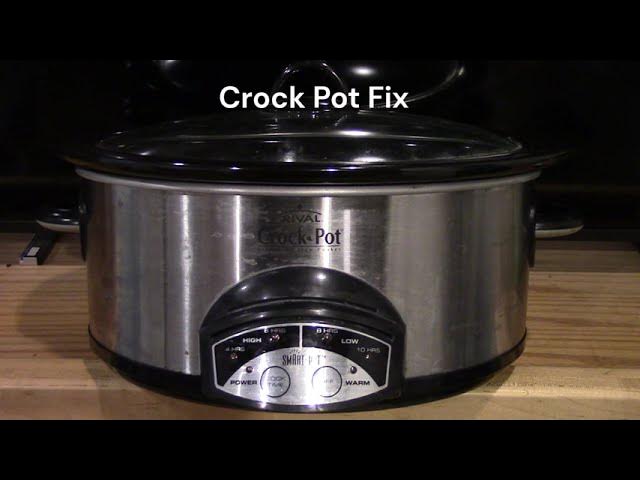
Execute the Factory Reset Sequence
When displays show “88:88” or programmed settings vanish after power loss, a firmware glitch is usually to blame. Perform this reset first: Unplug for 10 full minutes, then plug into a surge protector. Immediately hold START/STOP + “+” buttons for 5 seconds—release when the display flashes. This works on PSC-350C and most post-2018 models. Check your manual for MSC-800 variations; some require holding “Timer” + “Warm” instead.
If glitches persist, moisture damage is likely. Steam and spills cause 60% of control board failures. Critical prevention steps: Never immerse the base in water, wipe spills immediately with a dry cloth, and store with the lid inverted to prevent gasket compression. Always use a surge protector rated 600+ joules—power fluctuations scramble microcontrollers.
Fix Unresponsive Buttons Permanently
Sticky or dead buttons typically indicate membrane keypad failure. Test by pressing each firmly—if some respond while others don’t, disconnect the flexible ribbon cable at both ends. Clean corrosion with 90% isopropyl alcohol and a cotton swab, then reconnect securely. If buttons remain unresponsive, replace the keypad (PSC-350C: $18).
Warning: Avoid using excessive force on buttons—this cracks internal traces. When installing new keypads, align ribbon cables perfectly before snapping connectors shut. Misaligned cables cause immediate re-failure.
How to Fix Lid Locking Failures in 3 Steps
Clean Locking Mechanism Thoroughly
Food debris in locking tabs prevents secure closure, stopping operation before cooking starts. Remove the lid and invert it—check all three tabs for stuck particles using a toothpick. Wash the rubber gasket in warm soapy water, then dry completely. Inspect the lid magnet (located near the handle)—if loose or cracked, replace it immediately.
For persistent issues, examine the base’s sensor window—a small rectangular slot on the rim. Clean with a cotton swab dipped in rubbing alcohol to remove grease buildup blocking the hall-effect sensor. Test alignment by rotating the lid until it clicks; weak magnetism requires replacement parts like PSC-350LIDGASKET.
Where to Buy Genuine Cuisinart Replacement Parts
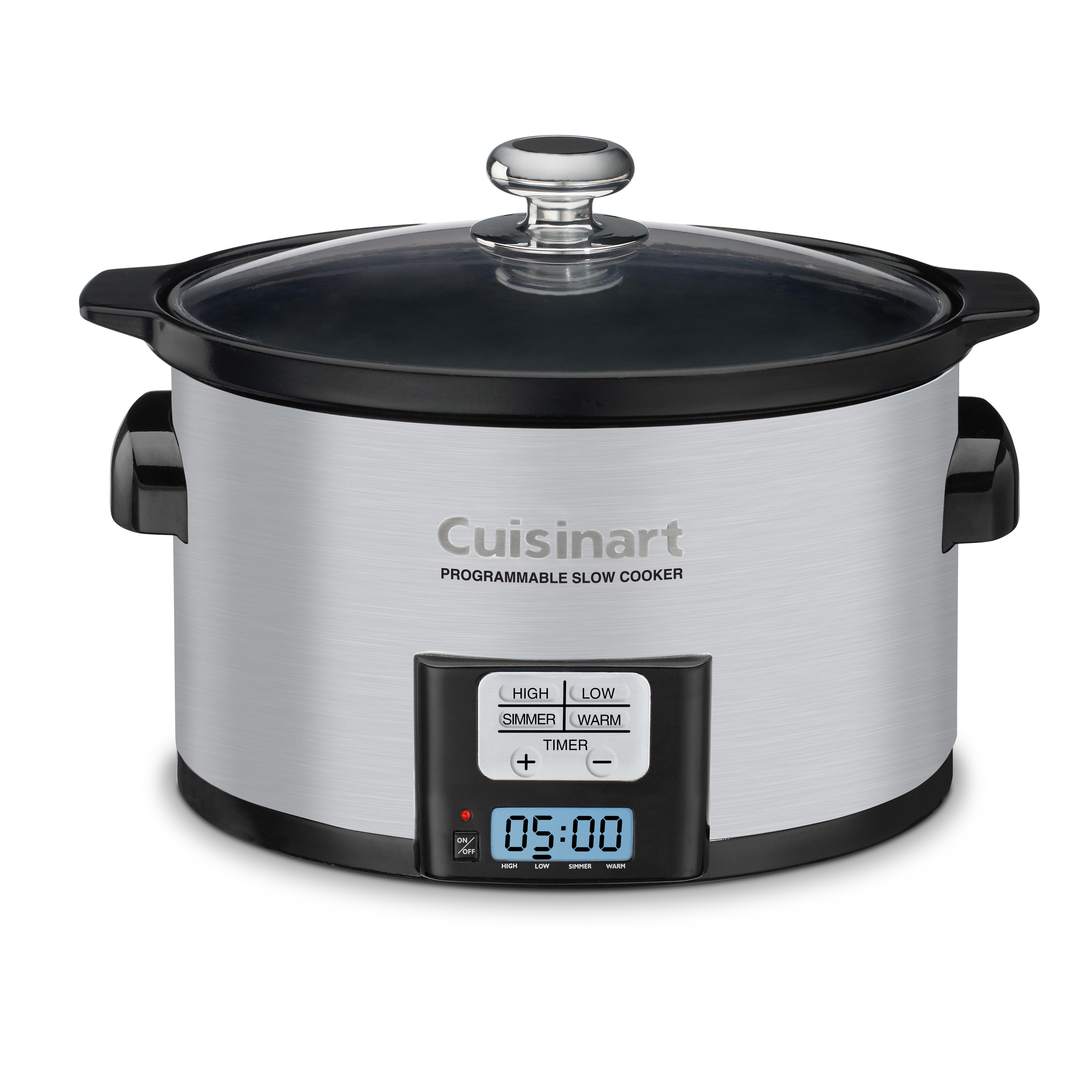
Match Parts to Your Exact Model
| Component | PSC-350C Part # | MSC-800 Part # | Cost |
|---|---|---|---|
| Heating Element | PSC-350ELE | MSC-800ELE | $28-$35 |
| Thermal Cut-Off | 172°C TCO | 172°C TCO | $8-$12 |
| Control Board | PSC-350PCB | MSC-800PCB | $45-$65 |
Pro tip: When ordering heating elements, verify wattage matches your model—300W vs 400W elements look identical but won’t interchange. For fastest service, call Cuisinart directly (1-800-726-0190) or use eReplacementParts.com. Avoid eBay sellers without OEM markings—counterfeit parts cause 22% of repeat failures.
Prevent Future Cuisinart Crock Pot Failures
Daily Use Best Practices That Extend Lifespan
- Maintain minimum liquid levels as specified in your manual—never cook dry. This prevents thermal fuse trips and element burnout.
- Store unplugged with lid inverted to avoid gasket compression set (a top cause of lid sensor failures).
- Use a 600+ joule surge protector—power spikes destroy capacitors in MSC-800 models.
Real user data shows proper care extends average lifespan to 6-8 years. The PSC-350C’s heating element typically fails after 5+ years of weekly use, while MSC-800 capacitor issues plague pre-2018 models. Most “dead” units need only a $12 thermal cut-off—not a $150 replacement. Start with these simple diagnostics, and you’ll likely have dinner cooking again before the day ends. Your Cuisinart crock pot troubleshooting journey ends here—with a fully functional slow cooker and confidence to tackle future issues.


